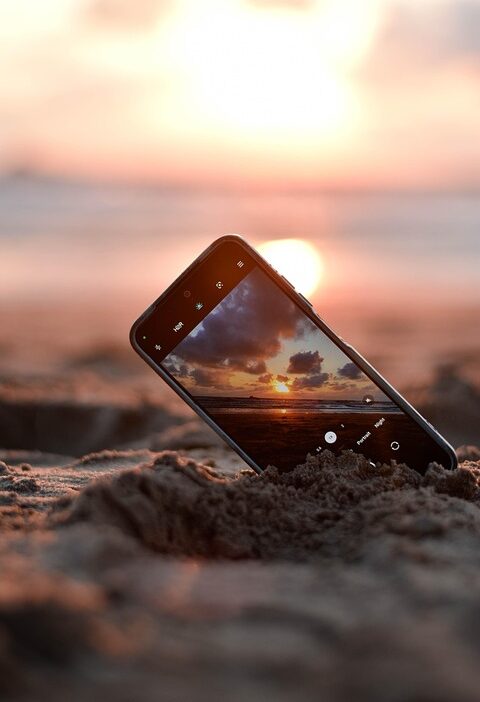The smartphone has become an indispensable part of our daily lives, evolving from simple communication devices into multi-functional tools that integrate vast capabilities, including photography, gaming, and personal banking. As we move beyond 2023, we can expect continued innovation in smartphone technology that will reshape user experiences and redefine how we interact with the digital world. Here’s a look at some of the exciting trends and technologies anticipated to dominate the future of smartphones.
1. Foldable and Rollable Displays
The foldable smartphone market has already made significant strides with devices such as the Samsung Galaxy Z Fold and Huawei Mate X. The next evolution may involve rollable displays that can expand or shrink to suit user preferences. These flexible screens will offer more real estate for multitasking and entertainment while maintaining portability. Imagine a smartphone that can unfurl into a tablet when needed and then roll back up for easy storage.
2. Enhanced AI Integration
Artificial intelligence (AI) is poised to become the backbone of future smartphones. Advanced AI will optimize various functionalities, from camera capabilities that can automatically adjust settings for perfect shots to personalized digital assistants that learn users’ habits and preferences. Expect AI-driven features, such as real-time language translation during phone calls and enhanced security measures through facial recognition and voice analysis.
3. Augmented Reality (AR) Experiences
As AR technology matures, we can look forward to smartphones that seamlessly integrate AR experiences into everyday life. The integration of AR could enhance mobile gaming, with users interacting with holographic characters in their real-world environments. Additionally, AR applications can revolutionize fields such as retail and education, enabling users to visualize products or access instructional content simply by pointing their cameras.
4. Sustainability and Eco-Friendly Design
With growing environmental concerns, the future of smartphone technology will likely prioritize sustainability. Manufacturers are expected to focus on eco-friendly materials, energy-efficient components, and modular designs that facilitate easy repairs and upgrades. Concept phones incorporating bioplastics and recyclable materials are already in the pipeline, reflecting a shift towards reducing electronic waste.
5. 5G and Beyond
With the rollout of 5G networks, smartphones are enjoying faster speeds and enhanced connectivity. However, the future will see improvements beyond 5G, enhancing communication capabilities even further. Anticipated developments in satellite communications could make internet access pervasive, even in remote locations. This evolution will empower users with uninterrupted connectivity for streaming, gaming, and working from anywhere in the world.
6. Advanced Biometric Security
As security concerns continue to rise, future smartphones are likely to employ more sophisticated biometric solutions. Beyond traditional fingerprint and facial recognition, we’re likely to see technologies leveraging behavioral biometrics, such as analyzing a user’s typing patterns, gait, or even heart rate to authenticate identity. These multi-layered security measures will enhance personal data protection while making access more seamless.
7. Longer Battery Life and Charging Innovations
Battery life has always been a challenge for smartphone users. Future advancements may introduce solid-state batteries, which promise greater energy density, faster charging times, and enhanced safety compared to conventional lithium-ion batteries. Further innovations may include wireless power transfer, allowing users to charge devices simply by being in proximity to a charging source.
8. Camera Technology Innovations
As photography continues to be a crucial selling point for smartphones, we can expect remarkable advancements in camera technology. Future smartphones could feature multiple lens configurations with enhanced computational photography capabilities, allowing for improved low-light performance, depth perception, and video quality. Technologies such as optical zoom and advanced image stabilization will cater to professional-grade photography, bringing it into the hands of everyday users.
9. User Interface and Experience Evolution
The user interface (UI) of smartphones is continuously evolving. Future devices may adopt gesture-based controls or holographic interfaces, removing the need for physical buttons and screens entirely. Voice commands will become even more integral, creating a more fluid and intuitive user experience that enables multitasking and hands-free interactions.
Conclusion
The landscape of smartphone technology is on the verge of profound change beyond 2023. With advancements in display technology, AI integration, AR experiences, and sustainability, the future promises to be an exciting juxtaposition of innovation and functionality. As we stand on the brink of these technological revolutions, one thing is clear: smartphones will continue to play an essential role in connecting us to each other and the world, forever transforming our lives in ways we can only begin to imagine.



